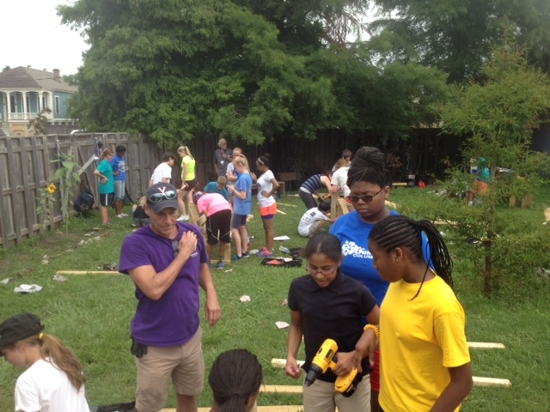Causa: Protecting Immigrant Rights, McGill Lawrence Internship Award, Cristobal Mancillas
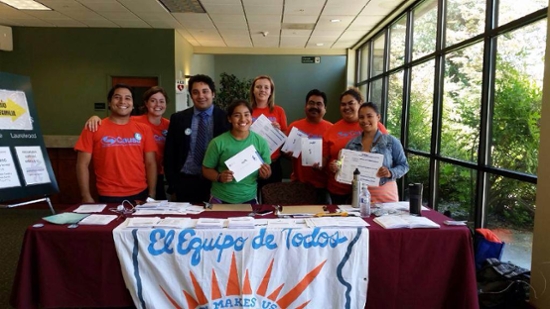
Cristobal (3rd from left) working a summer internship with Causa
I spent my summer traveling around Oregon while working for Causa, the largest network of Latinos in the Pacific Northwest. In this capacity I was given a great degree of independence and charged with a variety of tasks, from administrative tasks such as statistical analysis and the incorporation of the Voter Activation Network as a hub for directing volunteer and campaign management to activism in the form of voter registration, civil rights organizing, and immigration legal services. My primary work was to advocate for Measure 88 on the upcoming ballot, also known as the Safe Roads Act. This measure would reduce barriers to accessing insurance and grant thousands of people the opportunity to apply for a driver card regardless of citizenship status. I found this experience to be a meaningful supplement to my Reed education, so I have worked to establish a federal work study contract with Causa and Reed College.
Working with Causa has changed the way I think about politics, identity, and everyday experiences as well as the way these three facets of life interact with each other. I realized, as I talked to people on the streets, in supermarkets, Jaripeos, concerts and churches, that people of color face numerous obstacles that could (and should) be addressed by legislation. This led me to reflect on the role of politics as well as my own privilege. My coworkers were a huge inspiration to me because of their sense of purpose and commitment. I saw people overcoming language barriers, and driving long distances after a full day of work in order to help shape the world they lived in. They weren’t just raising signs, they were raising voices. I came out of this experience wiser, more skeptical (only a little bit jaded) and more conscious of my own identity. My internship continues to impact me in the new ways as my academics endogenously fuel my passion for social justice.
Continue reading Causa: Protecting Immigrant Rights, McGill Lawrence Internship Award, Cristobal Mancillas
Escaping Eritrea: Stories of the Mass Exodus (Part 3)
In her first and second blog entries, Winta set out on the President's Summer Fellowship journey, travelling to Uganda to interview Eritrean refugees for a documentary, and reuniting with members of her family along the way. In this installment, she travels to Rome to interview more refugees.
After leaving Uganda, my plan was to stay with my aunt in Italy and rely on her to help me connect with Eritrean refugees in the area. Unfortunately, there was a misunderstanding about my arrival date and I actually landed the day she was leaving the country. Since I knew absolutely nobody else in Rome, I decided to get a hotel room in the city center. I noticed there were several Eritrean restaurants nearby and decided go in and ask the servers about where I might find Eritrean refugees in Rome. This required a lot of courage because I had no idea how they might receive me, but it turned out to be a successful endeavor.
The owner of the restaurant walked me to this place referred to as “The Palazzo” (which was two blocks away from my hotel room), and told me to talk to the Eritreans at the front desk. Though I couldn’t possibly describe everything that happened afterwards in this short blog, I will talk about two of the major highlights.
Continue reading Escaping Eritrea: Stories of the Mass Exodus (Part 3)
The Structure of a Wind Turbine's Vortex
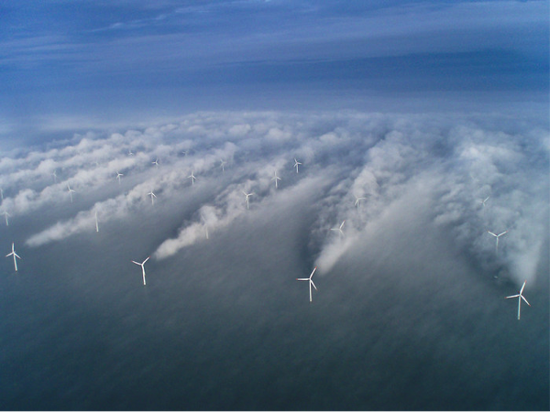
A wind turbine mixes wind into chaotic vortices. These vortices limit efficiencies of the turbines that are located downstream. The tip of the turbine’s blade creates a particularly strong vortex. In the latter part of my research, I have become enthralled with how this vortex’s strength varies across space. This vortex is strongest near the middle of the vortex, and it is weaker farther away. Let us refer to the vortex’s strength as vorticity. Along a line that bisects the vortex, the plot of the vorticity versus the distance is similar to the plot of a Gaussian function, which also known as the normal distribution or the bell curve.
Thus, the vorticity distribution is approximately Gaussian. The reason for this Gaussian approximation is that diffusion smears the vortex out into a Gaussian shape. Diffusion often acts to spread distributions out into Gaussian curves; as you read this sentence, this process occurs around you because diffusion acts to spread heat out towards a Gaussian distribution. Gaussian distributions frequently occur under diffusion because Gaussian convolutions are mathematically simple ways of smoothing out functions. Diffusion spreads a vortex out to a stable, more uniform state by making the distribution into a progressively shorter and broader Gaussian.
Diffusion, however, is not the only force that acts upon a vortex; for interactions between vortices make the vorticity distribution more complicated than a simple Gaussian. A plot of vorticity along a line that bisects a vortex is similar to - yet distinctly different from - a Gaussian. Distributions across various lines differ from Gaussians in different ways. Averaging these plots together gives the graph shown below. The vorticity is normalized by the maximum vorticity of the vortex.
Continue reading The Structure of a Wind Turbine's Vortex
Slim to None: the Eritrean Exodus: Part 2
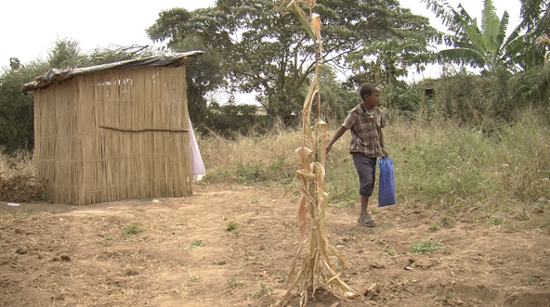
A young boy leaves his home that he helped build at the Nakivale Refugee Camp.
In her first blog entry, Winta set out on the President's Summer Fellowship journey, travelling to Uganda to interview Eritrean refugees for a documentary, and reuniting with members of her family along the way. In this installment, she travels to a nearby refugee camp for her project.
When my brother agreed to drive me to Nakivale Refugee Camp, which is five hours away from Kampala, I assumed he knew how to get there. A few hours before we were set to depart, however, I noticed his apprehension. That’s when I found out he had never actually driven there himself. As I begin to rethink my plans he assured me that there was only one road in that direction, which meant there was no possible way to get lost.
We decided to travel through the night, so we could arrive there early in the morning. Though I expected unpaved roads and minimal traffic lights, I was completely unprepared for the overwhelming darkness that threatened to swallow us into the wilderness. For most of the ride, it was so dark that my brother and I could not see each other in the car. I couldn’t help but think about how we were completely on our own, with no way to call for help if necessary.
Continue reading Slim to None: the Eritrean Exodus: Part 2
A Long Overdue Reflection, McGill Lawrence Internship Award, Sunny Yang
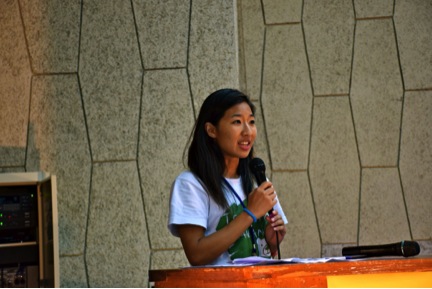
Me being the MC for the closing ceremony of the summer pre-service training.
The past two months have been a whirlwind of events, feelings, and encounters. Quite different from my original imagining of this summer internship, yet equally as fantastic, or even more so.
Originally, the plan was to spend half of my time doing a field research project in rural regions in Taiwan for the organization Teach for Taiwan, and the other half of the time would be spent assisting the organization in finding mentors for Teach for Taiwan's pilot cohort teachers. Well, plans don't always work out, especially independent internship projects like this.
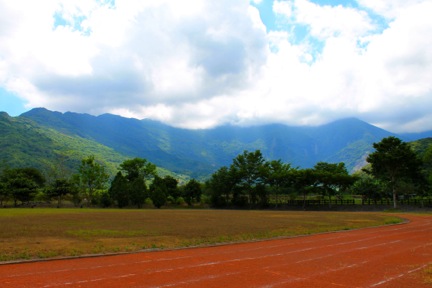
Interview with William Vickery
Madeline Wagar ’16, Assistant Editor with Works & Days, interviewed William Vickery '10, Classics major and Senior Investigator at Mintz Group.
Tell me a bit about Mintz Group.
I’ve been working with Mintz since January of 2012. Mintz is a traditional private investigation firm specializing in corporate intelligence gathering. Clients contact us when they are interested in figuring out what their competitors are doing. Clients are often interested in looking into how other people in their field are using similar trademarks, or in figuring out who is the best to do business with in their field of interest. It’s a very diverse company. Our operations fall into three categories. The first is foreign relationships, so we are investigating corporations around the world and making sure they are reputable. The second category is disputes and litigations. This category contains a lot of white-collar work. It’s often employment related, or dealing with the Internet, tasks like website preservation. We try to discover what has worked successfully in the past. We also investigate employee misconduct, so we might come in after an employee makes off with $100,000 to figure out how they did it. We will put together a profile of how it was accomplished, and the client can work out a plan for prevention in the future.
Continue reading Interview with William Vickery
Take Me Out to the Ball Game...
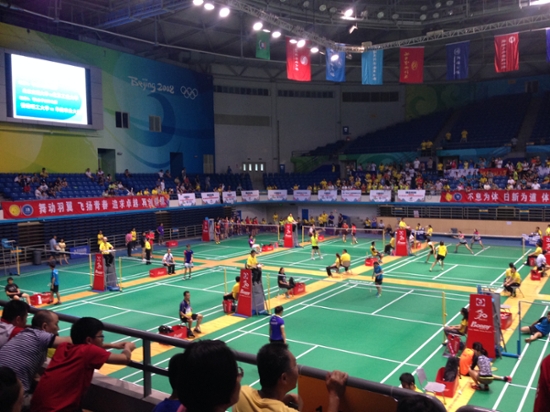
For the first decade of my life I was raised, shall we say, sports-agnostic. My family didn't hate sports, we just paid almost no attention to the usual lot of them—basketball, football, baseball. We were a remote island from the great continent of American sporting life, and those bits of scandal-ridden sports news that did float our way were enough to keep us distant and disinterested—even disapproving.
When I was about ten though, an unexpected bridge to a wholly different continent—and a totally different sport—opened up and my family stumbled upon badminton. The truth is my dad had a Chinese girlfriend at the time and she introduced the sport to him.
As the story goes, my dad, knowing that his girlfriend liked the sport, bought a cheap two-racket-plastic-bird-volleyball-net badminton set and presented it to her one summer day. She promptly laughed. “That's not real badminton,” she said. Wondering what she could have meant by this, my dad decided to bring her to our local junior college, knowing it offered open-gym play for just a few dollars. There my fit, well-coordinated dad proceeded to get clobbered by girlfriend and company. He took big hammer-swings at the bird, but it was no use—he looked like a fool to the delight of his more skilled opponents. But he relished the challenge, committed to playing at least once a week, improved his technique, and soon brought myself and my brother along to play as well. In no time it was our weekly tradition.
Continue reading Take Me Out to the Ball Game...
Green Molecules and Green Chemistry Labs, Part III
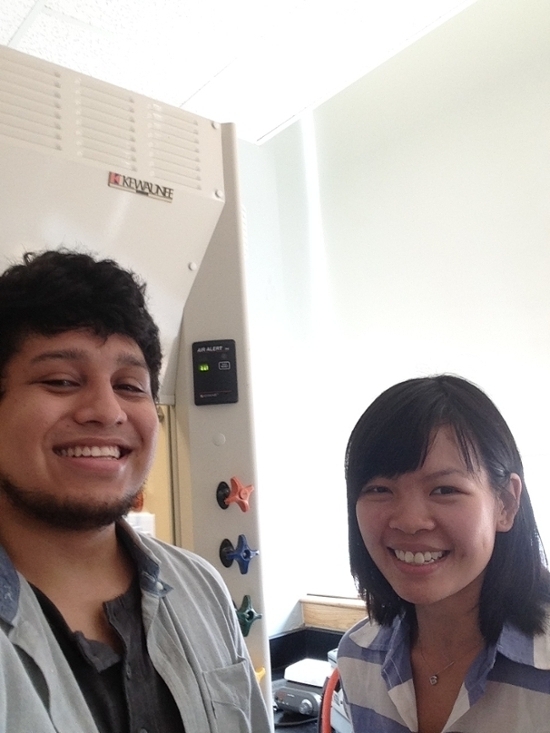
Johnny and Cindy.
It’s been two weeks since my last day at the lab. The time I’ve spent away has given me a different perspective on how I spent my summer.
The things I learned have made me fall in love with chemistry all over again. Solid-state synthesis, gas-phase-synthesis, ionic liquids, phase-transfer catalysis, macrocycle synthesis, these terms have gained new meaning since I had first read about them in a textbook in May (it seems so long ago).
The Aldol condensation is already a green organic chemistry reaction: it has high atom-efficiency and produces water as a byproduct.
Continue reading Green Molecules and Green Chemistry Labs, Part III
Slim to None: the Eritrean Exodus: Part 1
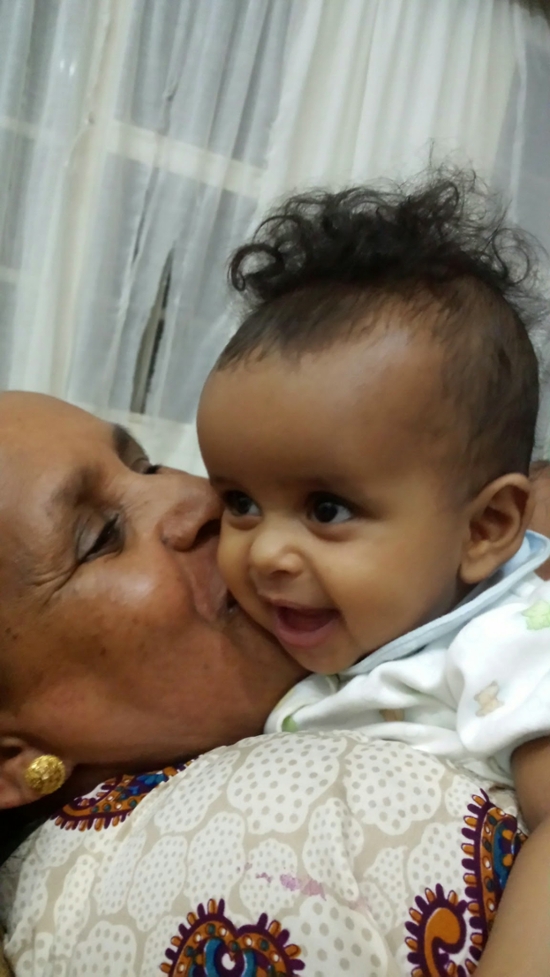
Grandma meets grandbaby for the first time!
Quoting from Winta's President's Summer Fellowship proposal: This summer, I will make a film about this tragedy and the plight of the Eritrean refugees in general. I will interview Eritrean refugees in Uganda, Italy, and the United States. Being an Eritrean immigrant myself, I will explore the diaspora within my own family and demonstrate how film can be a medium for promoting social justice.
Last October, a boat holding 350+ Eritrean refugees capsized off the coast of Italy and rocked the Eritrean community, forcing me to confront questions about who I am and where I come from. While the basic story is that conditions inside of Eritrea are so terrible (indefinite mandatory military service, extrajudicial killings, president turned dictator, etc.) that people will risk everything to flee, I wanted to hear first-hand accounts of what was actually happening. I also aimed to gather first-hand accounts of what happened in Lampedusa when that boat carrying over 350 Eritrean asylum seekers capsized. Among other specifics of the event, I wanted to know if there were Italian witness who didn’t help the drowning Eritreans (as some news outlets have reported) and what effect that has had in the Italian political scene. Most importantly, I wanted to be able to share the stories I encountered with a much broader audience to finally illuminate tales of the Eritrean exodus.
As I was preparing to go to Uganda, it occurred to me that indefinite mandatory military service, the main complaint about Eritrea, is also the reason my family has been torn apart. Because my three older siblings were older than sixteen when my mom decided to move us to the U.S., the Eritrean government refused to grant them exit visas because they hadn’t satisfied their national duty requirements. After ten years of forced service, my brother decided to flee and is now a refugee. While I originally intended for him to be only my contact for gathering others’ stories, I realized ours was just as interesting and seemed key for exploring my own relationship with these issues. As such, Uganda also became the location of a family reunion. After fifteen years, I would be reintroduced to my older siblings; my mom would see her kids again and be introduced to two of her grandchildren; and, I would capture all of this on video to humanize the effects of the current Eritrean crisis.
Continue reading Slim to None: the Eritrean Exodus: Part 1
The Siegel Salmon Restoration Internship: Part 3
Some things about the American beaver:
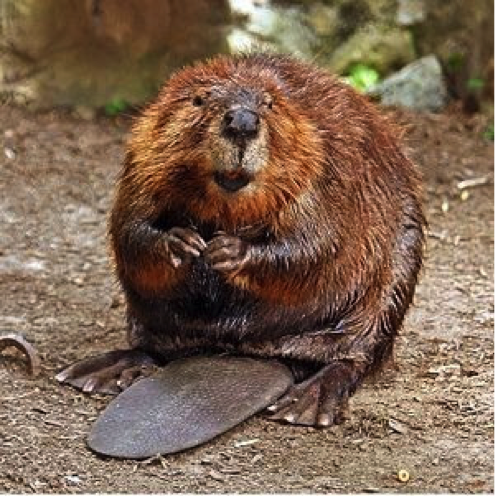 Figure 1. The American beaver.
Figure 1. The American beaver.
When Doug, the Land Trust’s Big River Program Manager, first proposed the idea to me, I was more than a little surprised. We had spent so many weeks talking about large woody debris, culvert passage, and road decommissioning that it seemed almost impossible for something so cute and furry to help salmon. I suspended my disbelief and delved into research. Lo and behold, beaver reintroduction projects have proven successful throughout the Pacific Northwest, improving salmon habitat and raising fish numbers. It isn’t an easy choice by any means; reintroducing beavers on one property requires monitoring their survival, distribution shifts, and population growth. However, a surprisingly large body of literature exists on the remediation of these issues, and has been used in other beaver reintroduction projects. So, why not try it?
Continue reading The Siegel Salmon Restoration Internship: Part 3
Old Thimi, Nepal, Potters of the Prajapati Community: #2
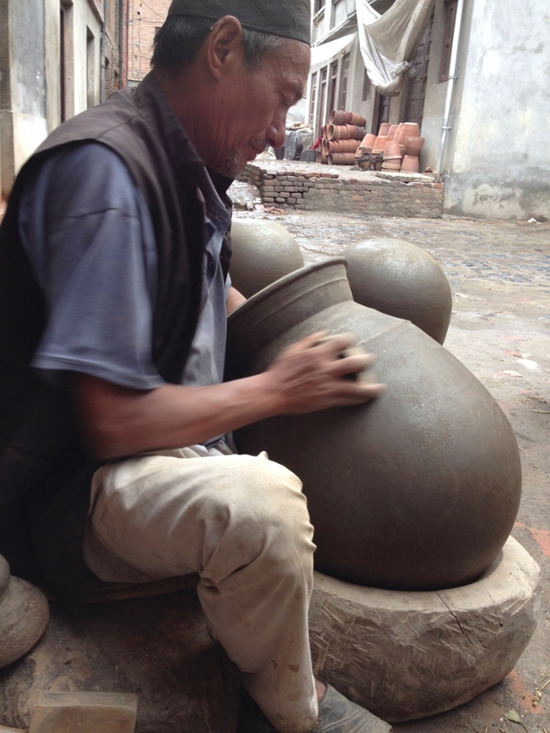
Beating pot.
A number of things have happened since my last blog post: I have turned 21, I have left Nepal, and managed to catch and rid myself of (as so many other Americans in Nepal have before me) a bad case of lice. But these lovely little creatures surprisingly turned into a bit of a blessing. By the time I had realized my new hair inhabitants I was in the midst of my final weeks in Nepal. At that point I was honestly quite exhausted, and I had begun to withdraw from both my host family and my project. I had arrived at a place where I knew my remaining time was limited, and I wasn’t sure if chasing new leads in my research could be adequately pursued before my departure. “Bria’s little friends” (as my host mother liked to call them) kicked me out of this slump. I spent about 3 hours a day for one week sitting in sun with my host family as they picked the bugs out of my hair. These lice-finding sessions prompted newfound bonds with the non-English speaking women in my family as well as further consideration of topics regarding my research.
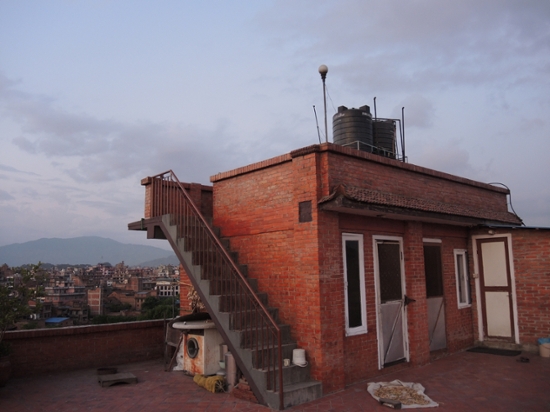
Aside from the lice, there were certainly many other challenges I faced during those last weeks. In an interview with a prominent Buddhist priest/scholar in the Newar community, we argued about what it means to be Buddhist or Hindu. The potters with whom I live self-identify as Hindu, however, all of their life cycle ceremonies (birth, puberty, marriage, death etc.) are conducted by Buddhist priests in the Buddhist way. My interviewee argued that therefore my potter friends were Buddhist. It is important to note that in the Newar community separating these traditions doesn’t always make sense, especially in the context of ritual. Why this is the case is perhaps too complicated to explore in this short blog post but will be addressed in my final project along with its implications on the ceramic vessels I study.
Continue reading Old Thimi, Nepal, Potters of the Prajapati Community: #2
London Part 1: Getting My Bearings
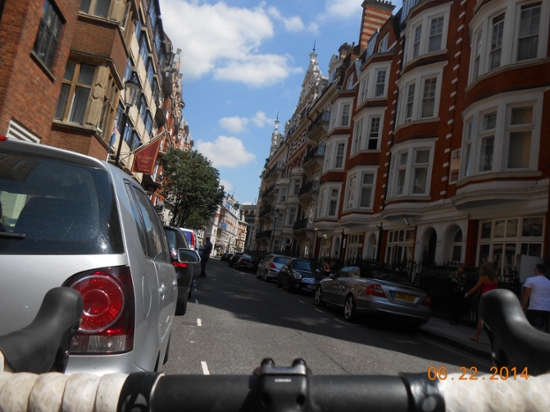
Getting My Bearings or, I assure you, Prof. Virginia Hancock, I did experience London, at least a little bit.
Distance and I have an exceedingly personal and quite visceral relationship. The spring and summer of 2014 saw me spend nine hours traveling fifty miles on foot, a few days touring several hundreds of miles on a bicycle, and five days crossing the mighty North American Continent by rail, among other things. It is in this context that I write that the thirteen hour ~5,000 mile flight across The Lake to London was pleasantly quick.
Immediately after clearing customs at Heathrow I collected my bicycle from the oversized luggage bin and made my way to a Transport for London ticket counter to purchase an Oyster Card—essentially, a swipe card that would enable me to use London’s buses, overground and underground trains. From there, I hopped a Piccadilly Line Underground train, “The Tube,” and made my way to central London.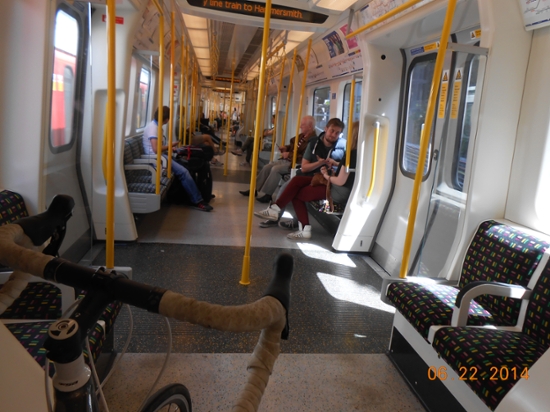
Continue reading London Part 1: Getting My Bearings
Interview with Van Havig
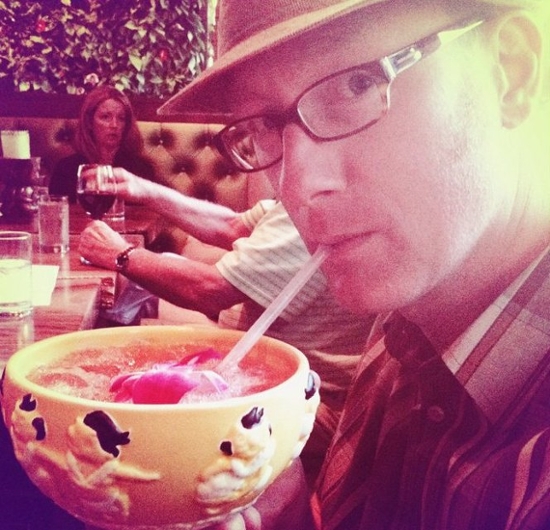
Madeline Wagar ’16, Assistant Editor with Works & Days, interviewed Van Havig '92, Master Brewer and Founder at Gigantic Brewing in Portland, OR.
Why beer? Why brewing? How did you get into it?
I am a class of ‘92 graduate. At the time at Reed, there was the general feeling that what you do when you get out of Reed was go to grad school. So right out of Reed I went to a Ph.D. program in Minnesota, studying economics. I did that for two and half years and as I went through I lost faith in economics. I was interested in it as a social science, not as business. Then I realized economics wasn’t great as a social science. I dropped out of grad school, and I wanted to do something that allowed me to work more with my hands. I am a very mechanical person. I was still in Minnesota and I decided to try to get a job at a brewery.
Continue reading Interview with Van Havig
Off Quad Rule: Part 9
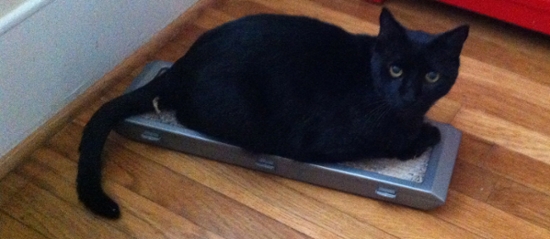
Rooibos
After a week of writing up a precise yet thorough protocol, I am getting to unwind after all the unpacking and driving. It took a few showers and a haircut to really feel like I got that signature ‘wet-lab’ film off, but I am finally back at home grazing and keeping cool.
Continue reading Off Quad Rule: Part 9
“他们打比赛,你做步法” (“They'll play games, you do footwork.”)
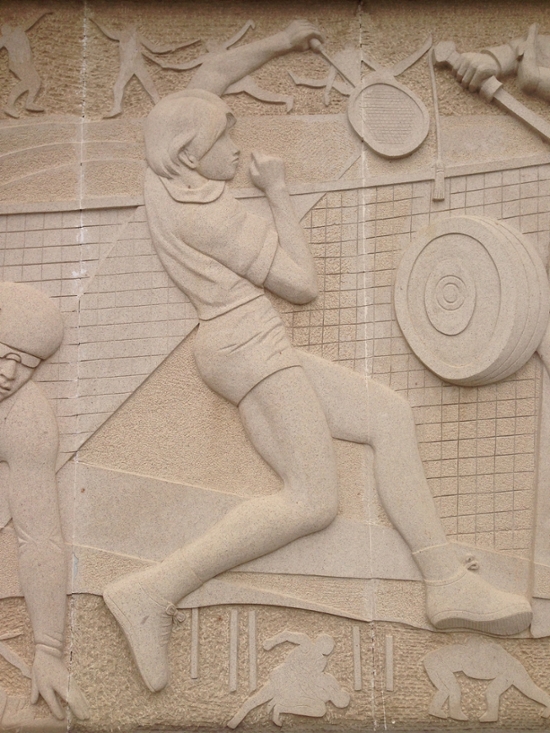
Those words more or less capture the story of my life for the past several weeks.
I am here at Beijing Sports University, staying in the international students dorm, waiting and writing as my clothes dry. I have no drying rack and the dorms have no dryers, so I've improvised a little bit with the curtain rods hanging around the window.
The room is nice. And the conspicuous absence of a dryer in these otherwise well-outfitted dorms is normal for Chinese colleges and households—where clothes hanging outside rooms is the rule and not the exception. You can bet that even if a Chinese person had a dryer, and all the money in the world to use it, many of those clothes would still be stubbornly hung up for Mother Nature to do her thing. Call it frugality mixed with convention, plus a dash of environmentalism 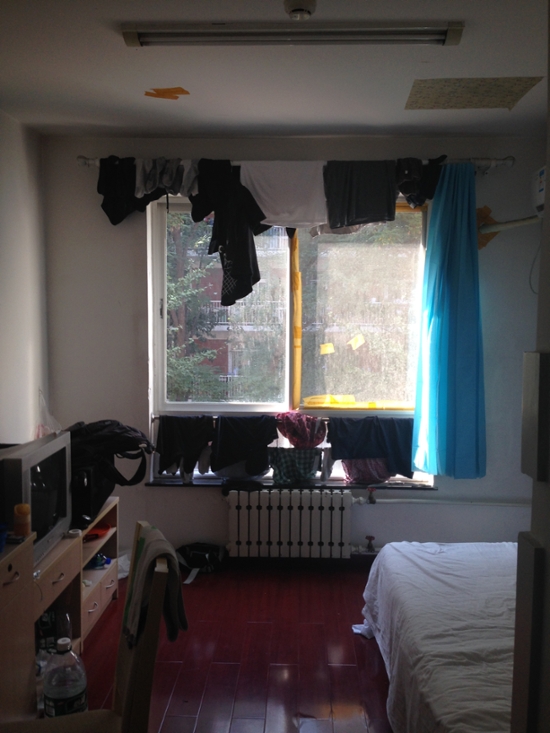
Through the window I see the red-brick, white-trim facade of the adjacent student dorm block. In a way almost reminiscent of Reed, these red bricks adorn most all of BSU's buildings, giving them dignified uniformity. But unlike our Eliot Hall's Gothic crown, these buildings are garnished with everything from Greco-Roman colonnades (a nice nod to the school's Olympic enthusiasm, I thought!), to elaborate futurist super-structures, to the traditional Chinese roof, with its signature corner-curl. 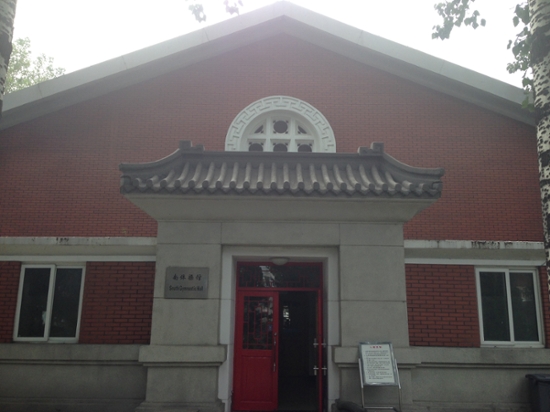
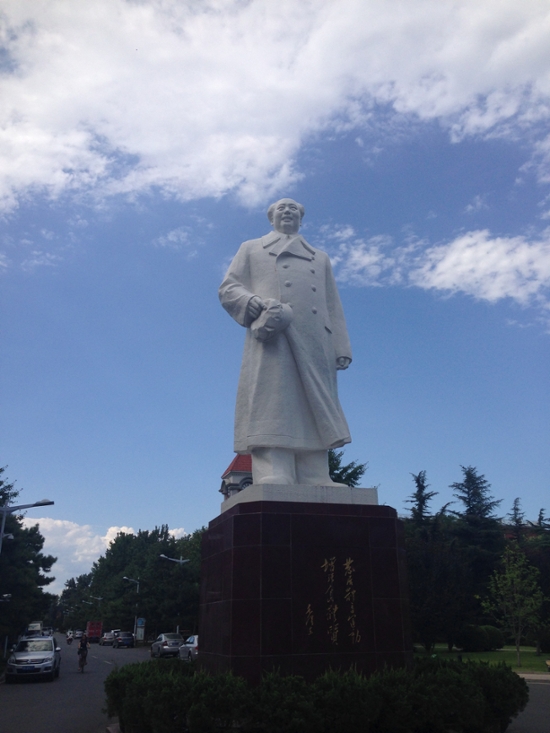
Continue reading “他们打比赛,你做步法” (“They'll play games, you do footwork.”)
The Devil is Made of Plastic
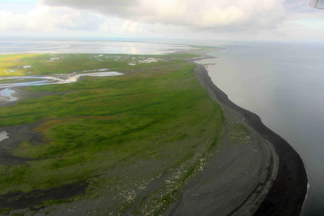
There are over 2,500 miles of coastline in the Kodiak Archipelago, and there are about 3,000-3,500 Kodiak brown bears that call their island namesake home. This means that if all those salmon-stuffed ursas were lined up along the many beaches and bluffs of their Alaskan archipelago each bear would pretty much have its own mile of coast. There are only about 1,300 miles of coastline in the entire west coast of the United States of America, from Bellingham, Washington to San Diego, California, and not nearly that many bears. Think about that one. In July, a team of eight people, myself included, went to Tugidak Island on the southern end of the Kodiak Archipelago and walked a mere 2.5 miles, or one one-thousandth, of Kodiak’s coast, picking up marine debris. Eight to ten THOUSAND pounds of marine debris in three days. Now wrap your head around that number.
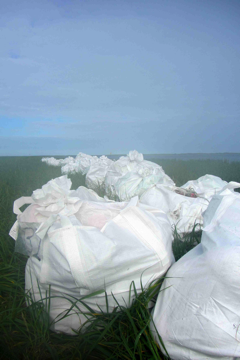 What is marine debris? It’s nothing more than a fancy term for trash. Garbage. Waste. Junk. And on top of whatever your word of choice is for human carelessness, you can also be sure to call it totally destructive and 100% preventable. 100% preventable, really? Yes, friends, as powerless as we all have been conditioned to feel by the forces of destruction themselves (albeit while they are disguised as “clever” advertisements and enticing packaging) this is an environmental problem that we can all stop squarely in its tracks.
What is marine debris? It’s nothing more than a fancy term for trash. Garbage. Waste. Junk. And on top of whatever your word of choice is for human carelessness, you can also be sure to call it totally destructive and 100% preventable. 100% preventable, really? Yes, friends, as powerless as we all have been conditioned to feel by the forces of destruction themselves (albeit while they are disguised as “clever” advertisements and enticing packaging) this is an environmental problem that we can all stop squarely in its tracks.
So what’s the source, you ask, genuinely curious. I recycle (when I can) you say. I don’t live by the ocean and I’ve even adopted a manatee! Well have you ever drunk out of a plastic water bottle? Ever? Even as you gave yourself the excuse that it was only because you left yours at home? Have you ever bought anything that when you turned it over you could feel, in little bumpy letters next to the seam of the plastic, said “MADE IN CHINA,” “MADE IN KOREA,” or “MADE IN TAIWAN”? Have you ever stopped to think about how strange it is for something that originated in a foreign country to have English lettering on it, as clear as day?
Continue reading The Devil is Made of Plastic
Updates and Gratitude Practices
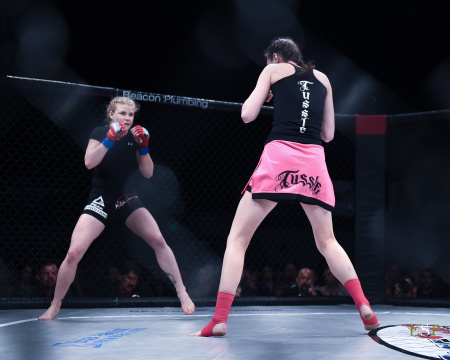
Going toe to toe with Hadley Griffith.
Emily Corso '10, Religion, is an MMA fighter who recently turned pro after a stellar amateur career. This is a re-posting of a post that originally appeared on Emily's blog, which can be found here.
Last week things were going pretty damn good.
It started out when I beat “Relentless” Hadley Griffith at CageSport 31 last Saturday. Coach called while I was on vacation and talked me into fighting a 5’11” seasoned pro on July 19th — meaning I would jump straight into the hardest part of our fight camp as soon as I got back to Portland.
Continue reading Updates and Gratitude Practices
PSF Project Campus Within Walls, 2

Washington Monument, summer 2014
It’s been an amazing last few weeks. I’ve learned and grown more than I would have thought possible in the short time I’ve been here. I’ve come to learn what a tenuous position this college program is in, and to so admire all the people behind the scenes who fight tooth and nail to keep it funded and alive to serve. I have learned that the philosophy I see embodied in the Campus Within Walls administration is one that must be practiced in whatever course my own life takes: To fight for the underserved, and to give without requiring any initial proof to pass a judgment of “worthiness.” There is a need, and they are ensuring it is met. It’s that simple.
Undertaking this project has been scary at times. Not for the reasons one might expect from a project conducted in a prison, but from the experience of being personally challenged. I love going to the prison class, but I will admit, there have certainly been times when I’ve wished I was at home, spending a carefree summer exploring the great Northwest with family and friends. I am very aware of my own expectations for this project. I want it to be great. I want it to do justice to the inmates’ experiences, humanity, and strength. It’s terrifying to think that I might not be successful. Were I not even trying, I wouldn’t have the discomfort I do, because I would not be creating the opportunity to fail. My limits are being tested. This grant has allowed me the chance to translate my lofty words and big dreams into actions. There’s no stopping now. Not only do I have myself to answer to, and those who placed confidence in my abilities by funding me, but I now also feel obligated to all the students and administration at the Campus Within Walls program. These students have lodged themselves irremovably in my heart and in my life. Although their lives and their college experiences are restricted behind fences and razor wire, there is no way that their impact on me will remain contained. Their needs don’t disappear when I do. My experience this summer has placed in me a sense of obligation to continue to work with prison justice and inmate rehabilitation programs. In my original thinking, I believed the PSF award was granting me the opportunity to “complete” my summer project. I am now realizing how limited that perspective was. Rather, what my PSF summer has done is awaken a passion and deep sense of loyalty and lasting obligation to this small, scrappy community college prison program. There is no way I will be able to close the door on this experience, and walk away from the dedicated students and administration. My work with Campus Within Walls is light years away from “complete.”
Continue reading PSF Project Campus Within Walls, 2
Defense Mechanisms of a City Under Water Siege, McGill Lawrence Internship Award, Suhai Yehuza
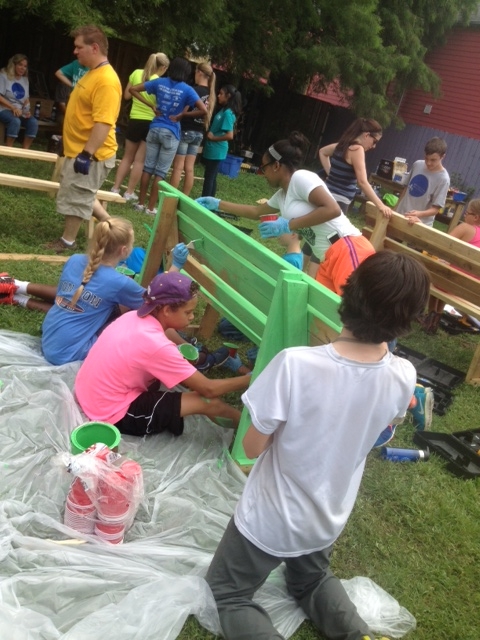
While parts of the country battle wild summer fires and far lands such as the Darfur region and Southwestern China make headlines in the news for want of water, one city is doing everything it can to rid itself of this important element of classical thought. This summer I am in New Orleans. And I must admit I was in part lured to this Southern princess by five star reviews of its rich culture and cuisine by Dana Lawson. After exploring as much of the city as I could during my arrival weekend, I turned my back on bustling Bourbon street, buckled my work boots, rolled up my sleeves, and began toiling under the sweltering sun with a team of other volunteers to fight water in this city. I am interning with Groundwork New Orleans, an environmental non-profit organization, this summer to lead a group of volunteers to construct rain gardens in the lower ninth ward of the city to minimize the risk of future flooding.
The start of the project had been delayed by a week pending paper work from the New Orleans’ Redevelopment Authority and the city’s Water and Sewage Board. So I spent my first week helping working with Global Green USA, a sister organization of Groundwork with a similar project on Andry Street. This gave me the first idea of the construction challenges I would be facing in the proceeding weeks. After two weeks of teasing grey clouds masking the resilient furnace of the sun, the clouds finally showed some potency by spewing down the long overdue rains. There were sighs of relief on the sweating faces digging the rain garden with shovels.
Continue reading Defense Mechanisms of a City Under Water Siege, McGill Lawrence Internship Award, Suhai Yehuza
Off Quad Rule: Part 8
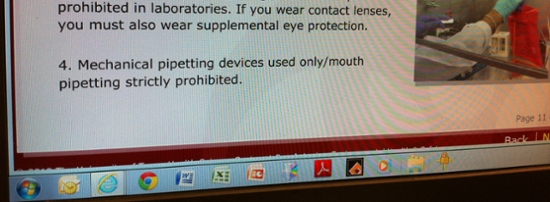
Tehina and Pita
There it is, no mouth pipetting… Sorry Makotes. After a good lab evaluation and fresh samples coming in, the few let downs stemming from the cannabinoid project are hardly felt. At the moment there are some technical difficulties being sorted out since I have been getting a signal of cAMP production when I don’t think I should be. Now I’m investigating a cAMP baseline for the lymphocytes I’m testing for comparison. The good news is that this is somewhat expected since I’ve moved on from the forskolin curve to also running the full agonist drug simultaneously with the forskolin and ATP, a new element to the complicated mix. One step forward, three or five back.
Ful Medames
This week has been super busy, the consequences of the power outage are slowly surfacing as I go about trying to use machines that have switched back to their manufacture default settings. They still work, there’s just a touch more tinkering around that adds up as the day passes along. This week more mouse brain samples arrived for tissue collecting and homogenizing. I finally got a clear picture of them to show you all, the worker making the extractions was excellent.
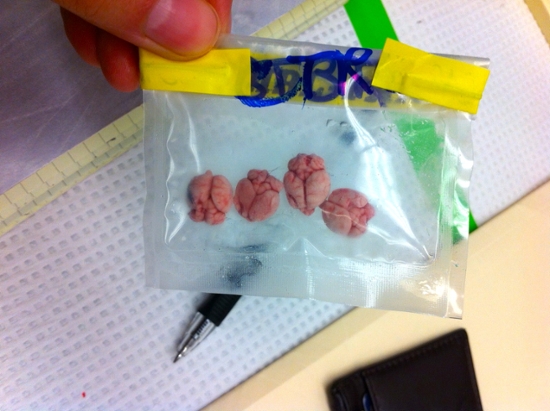 Figure 1. Mouse brains – 4 count. Don’t they look like candy? They’re also hard as rocks from bathing in liquid nitrogen. My thumb for scale, which is already small.
Figure 1. Mouse brains – 4 count. Don’t they look like candy? They’re also hard as rocks from bathing in liquid nitrogen. My thumb for scale, which is already small.
Continue reading Off Quad Rule: Part 8

